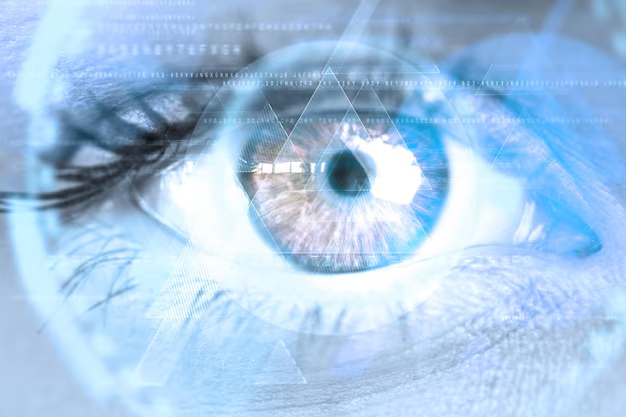When Will I See Clearly After Cataract Surgery?
Cataract surgery is a significant yet commonplace procedure that many people undergo to restore clear vision. For those considering this procedure or who have just had it, one burning question persists: How long after cataract surgery can you see clearly? In this article, we’ll explore the timeline for visual recovery and delve into key topics related to cataract surgery, providing you with a thorough understanding of what to expect.
Understanding Cataract Surgery
Cataract surgery involves removing the cloudy lens of the eye and replacing it with a clear, artificial lens. This operation is generally quick—around 15 to 30 minutes—and is performed on an outpatient basis. Patients often wonder about the specifics of recovery, particularly when they will regain clear vision.
The Surgical Process
Preparation: Before the surgery, your ophthalmologist will measure your eye to determine the correct power for your new lens. You'll receive local anesthesia and possibly a sedative for comfort.
Procedure: The surgeon makes a tiny incision in the eye and uses ultrasound energy to break up the cloudy lens (a process known as phacoemulsification), which is then removed. The artificial lens is placed inside the same "bag" holding the old lens.
Post-Surgery Care: There is typically no need for stitches as the incision heals itself.
Recovery Timeline: What to Expect
Post-surgery recovery can vary from person to person. Let's break down the stages of vision recovery after cataract surgery.
Immediate Post-Operative Period
First 24 Hours:
- Vision: Many patients report blurred or cloudy vision immediately after surgery. This is completely normal as the eye adjusts.
- Symptoms: Mild discomfort or a sensation of grittiness is common, and most are advised to wear an eye shield while sleeping.
The First Week
Within a Few Days:
- Vision Clarity: Vision clarity often begins to improve rapidly. Many people notice significant improvements within 48 hours.
- Activities: Light activities are usually permissible. Avoid strenuous activities, swimming, or exposure to dust and grime.
Two to Four Weeks
Steady Improvement:
- Vision: During this period, vision typically continues to stabilize. Colors may appear more vivid and clarity improves.
- Follow-Up: A follow-up appointment is generally scheduled within the first week to monitor healing.
Four to Six Weeks
Full Recovery:
- Vision: Most individuals experience clear vision between four to six weeks, although some variations occur.
- Prescription: At this point, an eye exam can determine if glasses are needed for optimal vision.
Factors Influencing Recovery Time
Each person's recovery can differ, influenced by several factors:
Age and Health
Your overall health and age play a role in recovery. Younger, healthier individuals often recover faster than older adults or those with other health issues.
Pre-existing Eye Conditions
Any pre-existing eye conditions, such as glaucoma or diabetic retinopathy, may slow recovery and affect the final vision outcome.
Type of Lens Implanted
Different types of intraocular lenses (IOLs) offer varying benefits. For instance:
- Monofocal lenses provide clear vision at one distance, typically distance.
- Multifocal lenses offer multiple focal points, improving both near and far vision.
Adherence to Post-Op Instructions
Following your doctor's post-op instructions is crucial for recovery. This includes using prescribed eye drops to prevent infection or inflammation and attending follow-up appointments.
Tips for a Smooth Recovery
Here’s a handy guide to help enhance recovery after cataract surgery:
- Rest: Let your body heal by getting plenty of rest.
- Eye Protection: Wear sunglasses outdoors to protect against UV light and reduce glare.
- Avoid Strain: Refrain from heavy lifting or bending that could strain your eyes.
- Follow-Up: Keep every follow-up appointment for optimal monitoring of eye health.
- Stay Hydrated: Maintaining hydration and good nutrition supports overall healing.
📝 Quick Recovery Tips
- Rest well 🛌 and limit screen time.
- Use prescribed eye drops 💧 diligently.
- Wear protective eyewear 🕶️ outdoors.
- Adhere to post-op checkups 📆 for ongoing care.
Understanding Expectations and Outcomes
While cataract surgery has a high success rate, understanding potential outcomes and setting realistic expectations is crucial for ensuring satisfaction with your results.
Possible Side Effects
Post-surgery side effects might include:
- Dry eyes: Common initially but often resolves.
- Light sensitivity: Can occur but usually subsides over time.
- Halos or glare: Some individuals might notice these around lights, especially at night.
Long-Term Considerations
The artificial lens will remain clear, but some patients experience a condition called "secondary cataract," where the membrane holding the IOL becomes cloudy. A simple laser procedure can correct this.
One of the greatest benefits of cataract surgery is the significantly improved quality of life due to better vision. Many people find they can resume activities they love with enhanced visual clarity.
Related Topics in Cataract Care
Cataract surgery and recovery often raise additional questions. Here are some key related topics:
Eye Care After Surgery
Beyond the immediate recovery period, maintaining eye health is paramount. This might involve incorporating eye-friendly nutrients in your diet, regular eye exams, and protecting eyes from excessive light.
Advancements in Surgical Techniques
The world of ophthalmology is ever-evolving. New surgical techniques and advanced lens technologies continue to enhance patient outcomes and shorten recovery times.
The Role of Lifestyle in Eye Health
Adopting a healthy lifestyle can improve recovery and maintain long-term eye health. This includes not smoking, moderating alcohol consumption, and engaging in regular physical activity.
Embracing Better Vision
Undergoing cataract surgery is a pivotal step to reclaim clear vision and improve quality of life. While recovery may vary from person to person, understanding the typical timeline and adopting effective recovery strategies can smooth your journey to better vision.
Your journey through cataract surgery doesn't end with the procedure; it begins there. By embracing comprehensive eye care and keeping informed about your recovery process, you can look forward to a life enhanced by the simple pleasure of clear sight.
